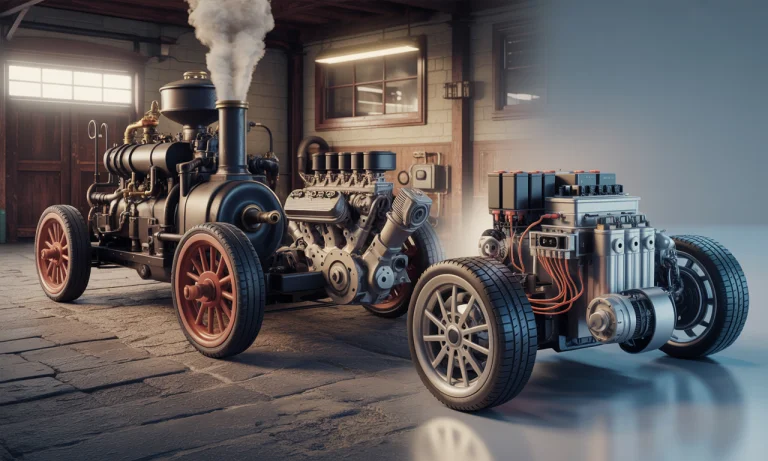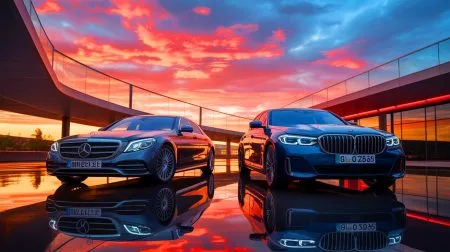Car engine technology has undergone a transformation as profound as any industrial revolution. From the hissing, clanking steam engines once admired by 19th-century crowds to today’s silent but powerful electric motors, the heartbeat of the automobile continues its relentless evolution. The competitive drive between pioneers—the likes of Benz, Ford, and Diesel—seeded an era where performance, efficiency, and sustainability are in constant dialogue. Modern giants such as Toyota, Tesla, and BMW shape the narrative’s present, leading an industry geared uniquely for the challenges and promises of a greener, smarter world. As we pull back the hood on this journey, the interplay of historic inventions, regulatory pressures, and boundless human ambition reveals how far car engines have traveled—redefining not only transportation, but also how society powers forward.
The Birth and Transformation of Car Engines: From Steam Dreams to Internal Combustion
When steam powered the early concepts of automobility, few could dream how swiftly innovation would reshape the very core of propulsion. The work of Nikolaus Otto, with his ingenious four-stroke engine, set a foundation still honored by engineers. Karl Benz, through sleepless nights and methodical tinkering, transformed possibilities into practicality by placing his internal combustion engine onto a frame that soon conquered German roads. These foundational inventors—joined later by the likes of É tienne Lenoir—demonstrated that the engine itself could become the heart of social progress, not merely a mechanical afterthought. The leap from steam to combustion wasn’t merely technical—it was a tale of changing aspirations, motivating companies like Ford and Mercedes-Benz to shape an age where speed, reliability, and mass production became household words.
| Era | Key Technology | Pioneering Company/Brand | Impact on Society |
|---|---|---|---|
| 1800s | Steam engines | – | Industrial Revolution, first self-propelled vehicles |
| Late 1800s | Internal combustion (Otto/Diesel cycles) | Mercedes-Benz | Massive increase in range and usability |
| Early 1900s | Electric starter, assembly line | Ford | Automobiles become accessible to the masses |
Early Engineering Marvels and the Seeds of Brand Legacy
In this nascent era, experiments with layout and performance flourished. The first V8 engines arrived to enhance power, while General Motors and Ford began to set global benchmarks in accessibility and design. Mercedes-Benz, building on Benz’s legacy, introduced luxuries and refinements that would become trademarks decades later. Every innovation seemed like a statement: the engine was not simply about movement, but aspiration, identity, and progress. This spirit still resonates, challenging every newcomer to ask—what should a car engine truly promise the world?
Breakthroughs and Rivalries: The Race from Carburetors to Electronics
As the twentieth century accelerated, new technologies quietly revolutionized the car beneath the hood. The reign of General Motors’ small-block V8 brought muscle and torque, while Volkswagen’s ingenious air-cooled engines propelled post-war Europe. Yet, complexity grew with progress: emissions concerns, rising fuel costs, and global competition all forced the old guard to adapt. The shift from carburetors to fuel injection underlined a new age—precision and efficiency replaced brute force. Turbocharging emerged on the tracks and streets alike, giving drivers of even modest sedans a taste of power once reserved for racing legends.
| Innovation | Brand Leader | Era Adopted | Main Advantage |
|---|---|---|---|
| Electronic Fuel Injection | Honda | 1980s | Greater efficiency and lower emissions |
| Variable Valve Timing | Toyota | 1990s | Smoother power, improved mileage |
| Turbocharging | BMW, Mercedes-Benz | 1990s–2000s | Higher output from smaller engines |
Electronics, Sustainability, and Regulations: Shaping the Modern Engine
By the 2000s, engines wore computers as much as pistons. Emission regulations forced hands across continents, from Euro 6 standards to the EPA’s expectations, driving waves of catalytic converters and hybrid experiments. Brands like Toyota brought hybrid systems mainstream, proving that environmental responsibility and everyday reliability could coexist. Today, technologies such as advanced engine management and lightweight materials aren’t just bonus features; they’re expected requirements in a world balancing performance with the health of the planet.
Electric and Hybrid Engines: Reinventing the Modern Powertrain
The narrative’s most electric twist—literally—arrived when silent motors began challenging the growl of combustion. Tesla invited curiosity (and controversy) by trading oil for kilowatts, while Nissan, Hyundai, and BMW began coaching consumers into new habits and expectations. Electric engines became more than an eco-friendly badge; they delivered instant torque and near-silent acceleration, shifting the very sensory experience of driving. Infrastructure, led by innovative charging networks, kept pace, as governments and automakers alike bet on a fully electrified future.
| Engine Type | Core Advantage | Brand Example | Environmental Impact |
|---|---|---|---|
| Hybrid (gas + electric) | Reduced emissions, fuel efficiency | Toyota Prius | Lower CO2, transitional sustainability |
| Fully Electric | Zero tailpipe emissions | Tesla Model 3, Nissan Leaf | Minimal energy waste, improving battery recycling |
| Hydrogen Fuel Cell | Renewable, quick refuel | Hyundai Nexo | Pure water emission, but limited infrastructure |
Everyday Experiences and the New Age of Maintenance
For the modern driver—whether choosing a Volkswagen ID.4 or a General Motors Bolt—routine car care has evolved. Electric and hybrid systems demand less frequent servicing, but they call for a new kind of expertise, reflected in the daily journeys of commuters and enthusiasts alike. Guides such as the Electric Car Terminology Guide and insights about EV maintenance costs are now as critical as classic engine know-how ever was.
Design, Performance, and the Future: Shaping Tomorrow’s Engines and Cars
Engine technology today doesn’t just sit at the core of a car—it shapes every curve, every ounce of weight, and every aerodynamic decision. As Ford and BMW experiment with lightweight composites and active aerodynamics, the silhouette of the automobile becomes ever more sculpted by what powers it beneath. Reduced engine sizes free designers to play with sharper lines and sleeker roofs, as seen in the bold exteriors of Mercedes-Benz or the futuristic style of Hyundai’s electric icons.
| Design Impact | Resulting Feature | Synopsis |
|---|---|---|
| Engine Downsizing | Compact engine bays | Improves weight distribution, aerodynamics |
| Hybrid/Electric Powertrains | Flat battery architecture | Lowers center of gravity, enhances handling |
| Turbomachinery/Forced Induction | Smaller, lighter chassis | Allows for distinct styling, agility |
Sustainability, Smart Tech, and What’s on the Horizon
The road ahead is alive with speculation. Will hydrogen rise, or will lithium batteries claim victory? Companies like Toyota and Hyundai have invested in alternative fuels, while General Motors and Volkswagen address electric range anxiety with improved infrastructure and battery performance—a topic explored in electric car road trip tips. Artificial intelligence, real-time diagnostics, and IoT will ensure smarter, safer engines, connecting driver and drivetrain as never before. Stay tuned for a landscape on which every automaker—be it Tesla, Nissan, or Ford—continues to chase that elusive balance: maximum thrill, minimal impact.
Discover more about the future of electric vehicles here and explore fresh perspectives on hybrid and electric innovation shaping the market.
Questions and Answers on Car Engine Technology’s Evolution
How did emission regulations influence modern engine design?
Stricter regulations in the US and Europe pushed manufacturers to adopt catalytic converters, turbocharging, and advanced engine management. These technologies were key in reducing emissions and improving fuel economies, prompting automakers like Ford, Toyota, and Volkswagen to innovate rapidly. For more, see emission regulations and car technology.
What is the biggest difference between turbocharged and naturally aspirated engines?
Turbocharged engines force extra air into the combustion chamber, delivering more power from a smaller size and improving fuel efficiency—widely adopted by brands such as BMW and Mercedes-Benz. In contrast, naturally aspirated engines rely solely on atmospheric pressure, offering more linear power but usually lower efficiency.
Why are hybrid and electric engines considered the future?
By blending internal combustion reliability with electric efficiency, hybrids offer lower emissions and improved fuel consumption. Fully electric engines, led by Tesla and Nissan, eliminate tailpipe emissions entirely, meeting consumer demand for cleaner, quieter driving.
How do advances in engine technology affect car design?
Innovations in engine efficiency and miniaturization allow designers to optimize weight distribution, reduce vehicle size, and improve aerodynamics—evident in modern models from Hyundai and General Motors.
What role do traditional automakers play in advancing electric engine technology?
Legacy brands such as Toyota, Honda, Volkswagen, and Ford leverage decades of experience to challenge newcomers like Tesla, ensuring constant competition and collaboration in the race towards sustainable transportation. This is especially visible in their new electric platforms and expanding charging infrastructure, detailed further here.
Did you like it? 4.6/5 (27)






